If you are in the online advertising business, you will know that native advertising is one of the best options for promotion. Why not? It is brand-safe, can send millions of views and impressions daily, and has a great engagement rate (click or view) compared to other traffic types. And if you’re a savvy marketer, you’d use a native advertising tracking system to monitor your conversions and see which campaigns are sending you the best results.
So here you go, wise marketer, and here is a list of the best native advertising trackers for you to choose from!
What Are Native Ad Spy Tools / Monitoring Tools
As the name suggests, native ad spy tools help you keep track of your competitors’ Native advertising campaigns. By ‘competitors’, we mean any other advertiser in your industry or niche running native ads on various Native ad platforms. These could be direct competitors and companies targeting your audience but not necessarily selling the same product.
Top Native Ad Spy Tools To Choose From
#1. Anstrex
Anstrex is one of the market’s most potent native ad spy tools, offering intelligent ad data on over 20 different ad networks and over three million ads.
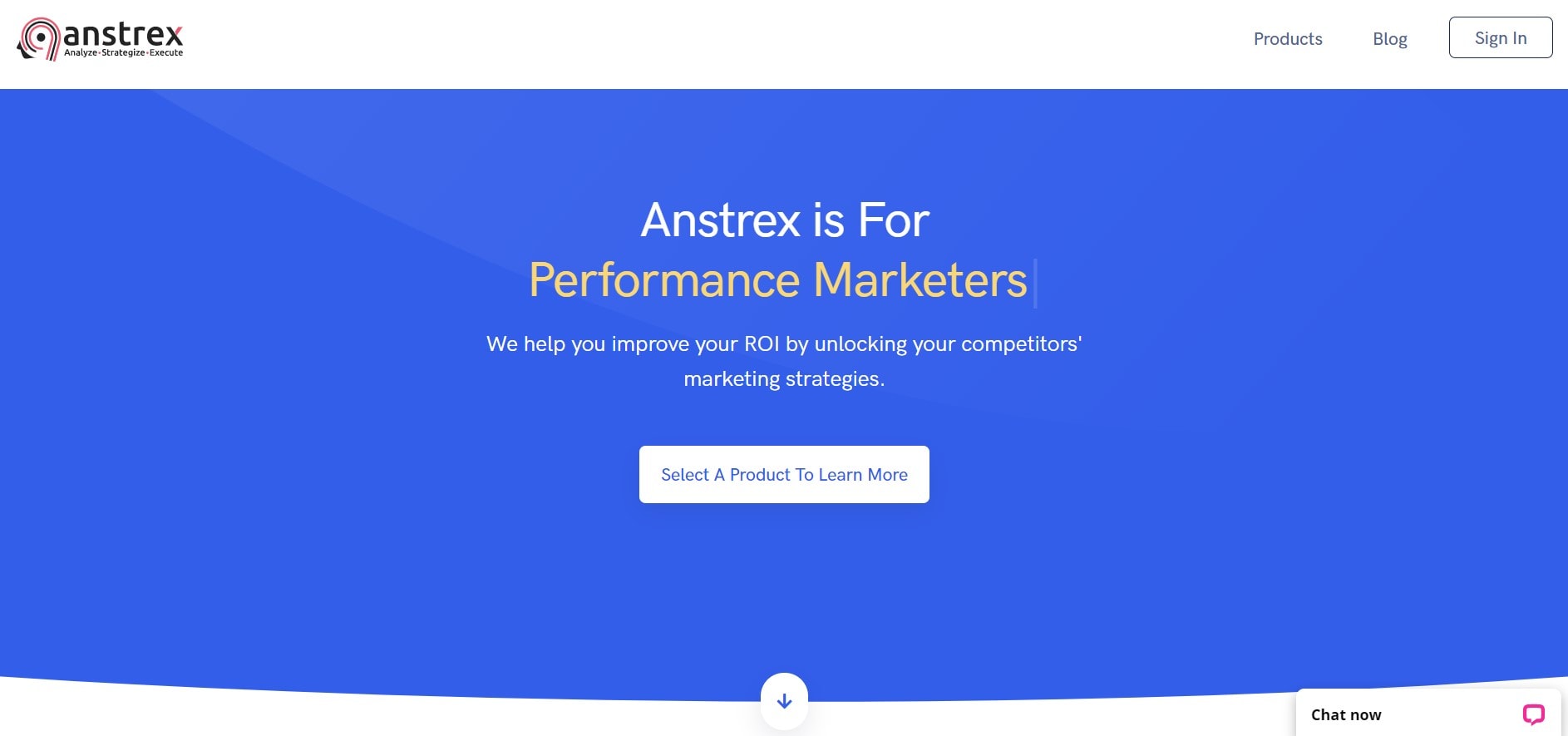
Anstrex offers easy-to-use search functionality on mobile and desktop ad versions, allowing you to view competitors’ landing pages with a button.
You can even download these landing pages to take it one step further. Another great feature of Anstrex is that it enables you to set alerts based on your criteria.
Pros
- Easy to understand
- Worth the price
Cons
- No trial
The system will notify you when it finds ads matching your criteria. This platform is essential for any online marketer looking to stay ahead of the competition.
#2. Google Analytics
Google Analytics is the most popular tracking tool online. It is free to use and can be used for both organic and paid traffic. This software uses a small javascript code embedded into the header of each page, which captures user information and sends it back to the tracker.

The Google Analytics code triggers user interactions with the site, such as page views, clicks, link tracking, and downloads. The collected data is then processed and stored in the Google Analytics account. Data processing includes filtering out bots and non-human traffic and sorting the data into sessions and hits.
A session is a group of hits occurring within a given time frame. The time frame can be customized but is typically set at 30 minutes by default. A hit is a single interaction with a website, such as a page view or a click. A session can contain multiple hits, which are tracked sequentially.
Pros
- Can monitor all kinds of traffic
- Free to use
Cons
- Can’t monitor affiliate conversions
Google Analytics provides a wealth of data that can be used to improve website performance. By understanding how users interact with a website, marketers can make changes that lead to more conversions and higher ROI. Additionally, Google Analytics can track the effectiveness of marketing campaigns and measure key metrics such as bounce rate and time on site.
Additionally, Google Analytics can track the effectiveness of marketing campaigns and measure key metrics such as bounce rate and time on site.
#3. SpyOver
SpyOver offers users extensive ad and landing page coverage, with data drawn from 115 countries and 13 ad networks.
This gives users a powerful overview of the online landscape, helping them identify impression trends and opportunities for their business.
The highly sophisticated analytical tools allow users to select specific periods, countries, and devices to generate tailored reports.
Pros
- Save your time and make more money
- Analyze the competitors of your niche and their activity
Cons
- Challenging to use
SpyOver also offers a unique mass downloading feature, which lets users download multiple ads and landing pages with just a few clicks.
This is an essential tool for anyone wanting to conduct a closer analysis of the data. Overall, SpyOver provides an invaluable service for anyone who needs to stay on top of the latest trends in online advertising.
#4. CPVLab Pro
CPVLab Pro is one of the oldest and most versatile tracking systems available. It provides more than 30 click and calculated metrics, which can be filtered and viewed in hundreds of ways.
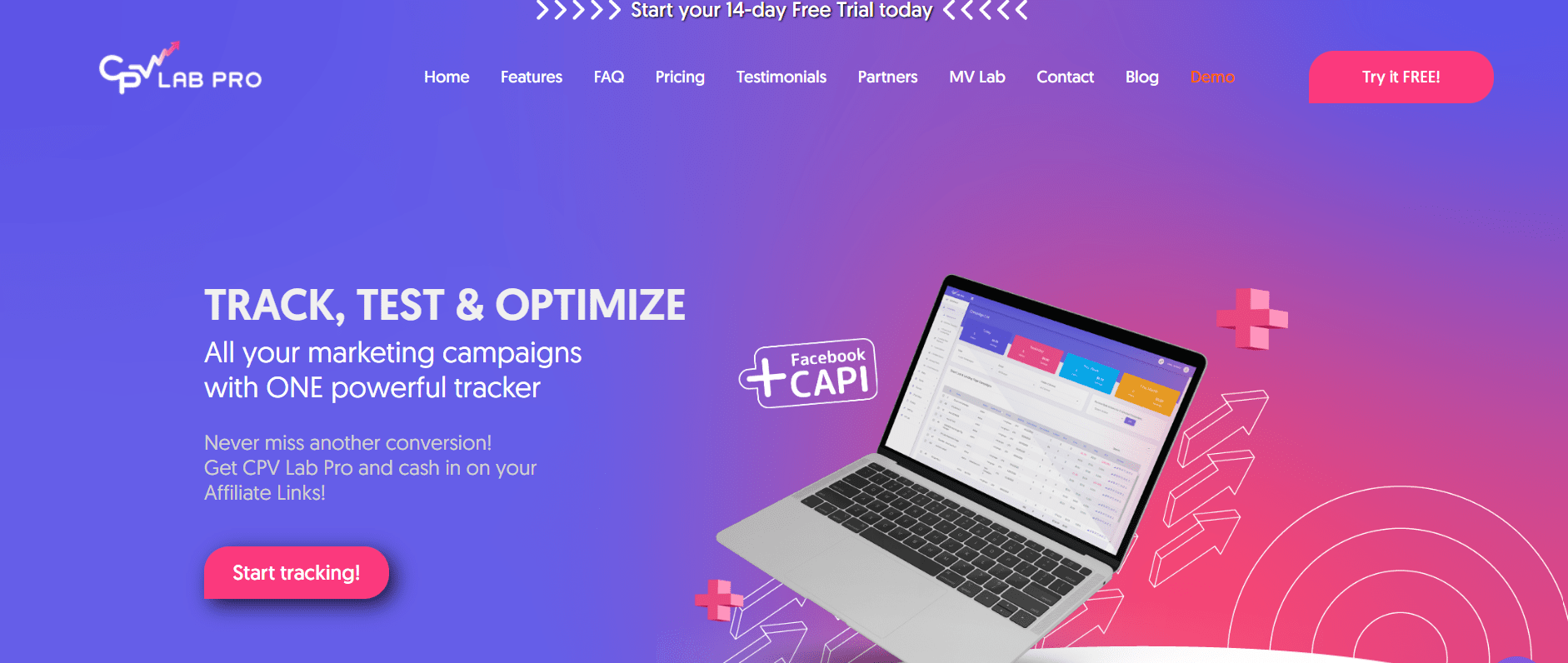
This makes tracking the performance of campaigns, ad creatives, landing pages, keywords, and sources easy.
Additionally, CPVLab Pro can track how long visitors stay on a page and other engagement metrics. This is all possible because CPVLab Pro is self-hosted, meaning there are no limits on traffic or data storage.
Pros
- Secure tracker
- Heavy Traffic Ready
Cons
- Little difficult to understand
However, you must find a separate hosting provider to install CPVLab Pro. Despite this additional step, the self-hosting feature is well worth it for its limitless possibilities.
Plus, with the ability to rotate unlimited offers and landing pages, CPVLab Pro is a powerful tool for any online marketer.
#5. AdsBridge
AdsBridge is a popular tracker among media buyers due to its wide range of features and affordable subscription plans.
However, the tracker is only suitable for those with a low traffic volume, as the subscription cost increases with higher traffic levels.
Despite this, AdsBridge offers impressive features that can benefit any media buyer. These features include real-time campaign reporting, simultaneous tracking of multiple campaigns, conversion tracking, and audience segmentation.
Pros
- Excellent support
Cons
- Takes time to understand
With these tools, you can effectively track your campaigns and optimize your media buying strategies.
As a result, AdsBridge is an ideal tracker for those just starting out in their media buying journey.
#6. Bemob
As any marketing professional knows, tracking data is essential for making informed decisions about your campaigns.
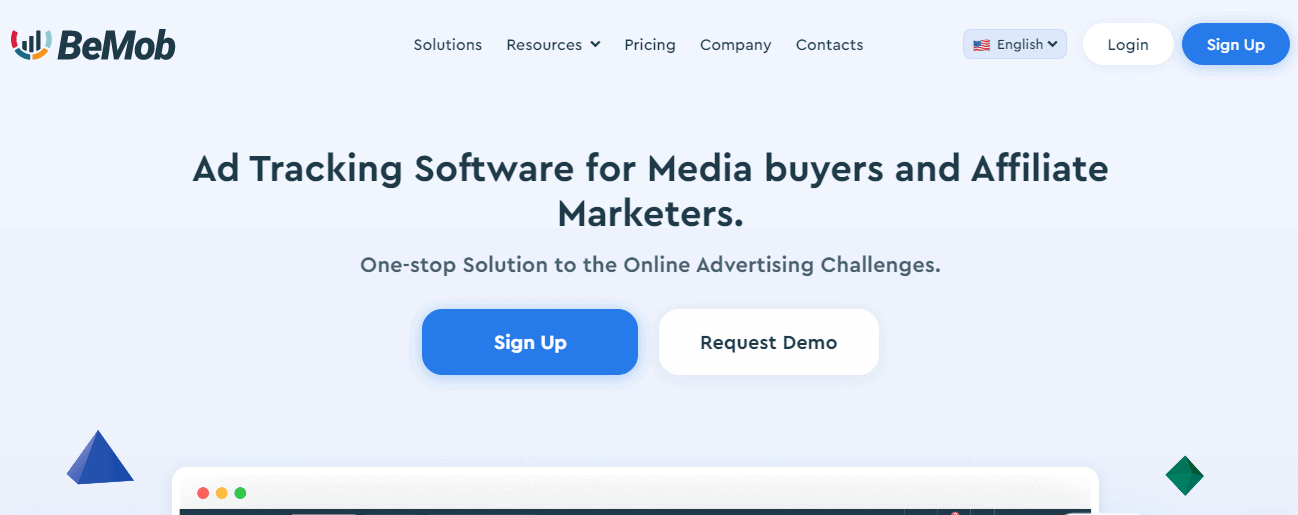
However, if you’re just starting out, you may not have the budget for a paid tracker. Luckily, there are some great free options available, like Bemob. The free version of Bemob allows you to track up to 100 thousand events, which should be enough for most small businesses.
However, if you exceed this amount of traffic, you will either have to pay overage fees or upgrade to a paid plan. Bemob is also highly customizable, so you can tailor your dashboard to show only the campaigns and statistics that are most relevant to you.
Pros
- Track all ad campaigns in one place
Cons
- A little pricey
This can save you time and help you make decisions quickly.
Ultimately, Bemob is an excellent choice for small businesses looking for a free tracker to start their data-tracking journey.
#7. Voluum
Voluum is one of the biggest and most popular media buying trackers. It has won several awards, including Best Tracker in the 2019 Affiliate Fix Awards.
Voluum provides many essential features for any serious media buyer, such as integrating with more than 40 traffic sources and deep click data from Google Analytics.
In addition, Voluum’s dashboard is user-friendly and provides all the information you need to make informed decisions about your campaigns.
Pros
- Multicurrency support
- Real-time reporting
Cons
- Challenging to understand at first
Voluum is an excellent choice for any media buyer looking for a powerful, easy-to-use tracking solution.
#8. Brax
Any digital marketer knows that effective campaign tracking is essential to success. Without tracking key metrics, it is impossible to know what is working and what isn’t. That’s why Brax is such a powerful tool.
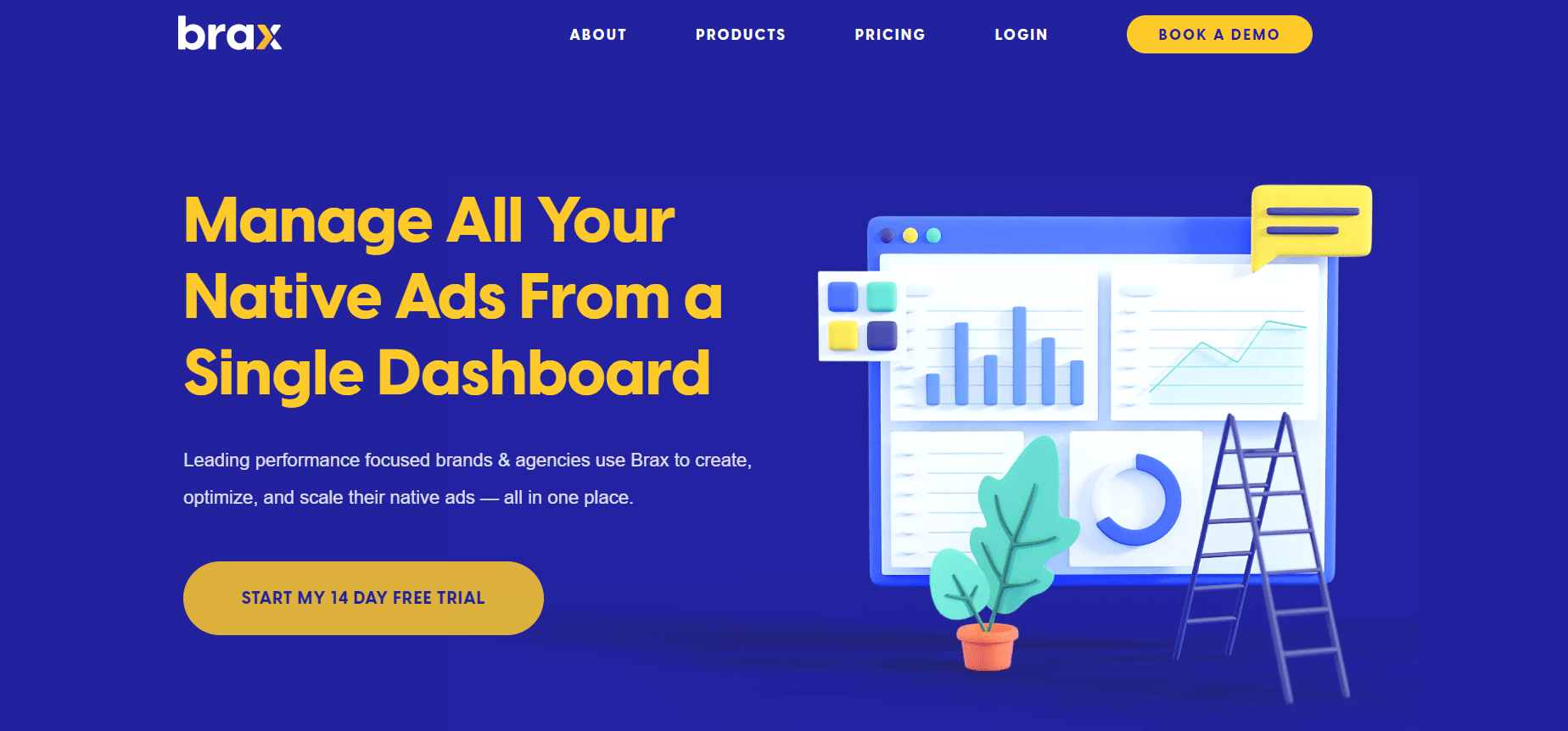
Brax allows you to track your native advertising campaigns in real-time, so you can make changes on the fly and maximize your results. Brax also offers a level of integration that other tracking platforms simply don’t.
With Brax, there is no need to switch between tabs and platforms – everything you need is all in one place.
Pros
- 14 Day Free Trial
- One dashboard, all your accounts
Cons
- A little expensive for beginners
If you’re looking for a native advertising tracker that will take your campaigns to the next level, look no further than Brax.
#9. ClickerVolt
While ClickerVolt doesn’t have the same sophistication as some of the more expensive trackers on the market, it’s a good choice for those looking for a low-cost option still packed with features.
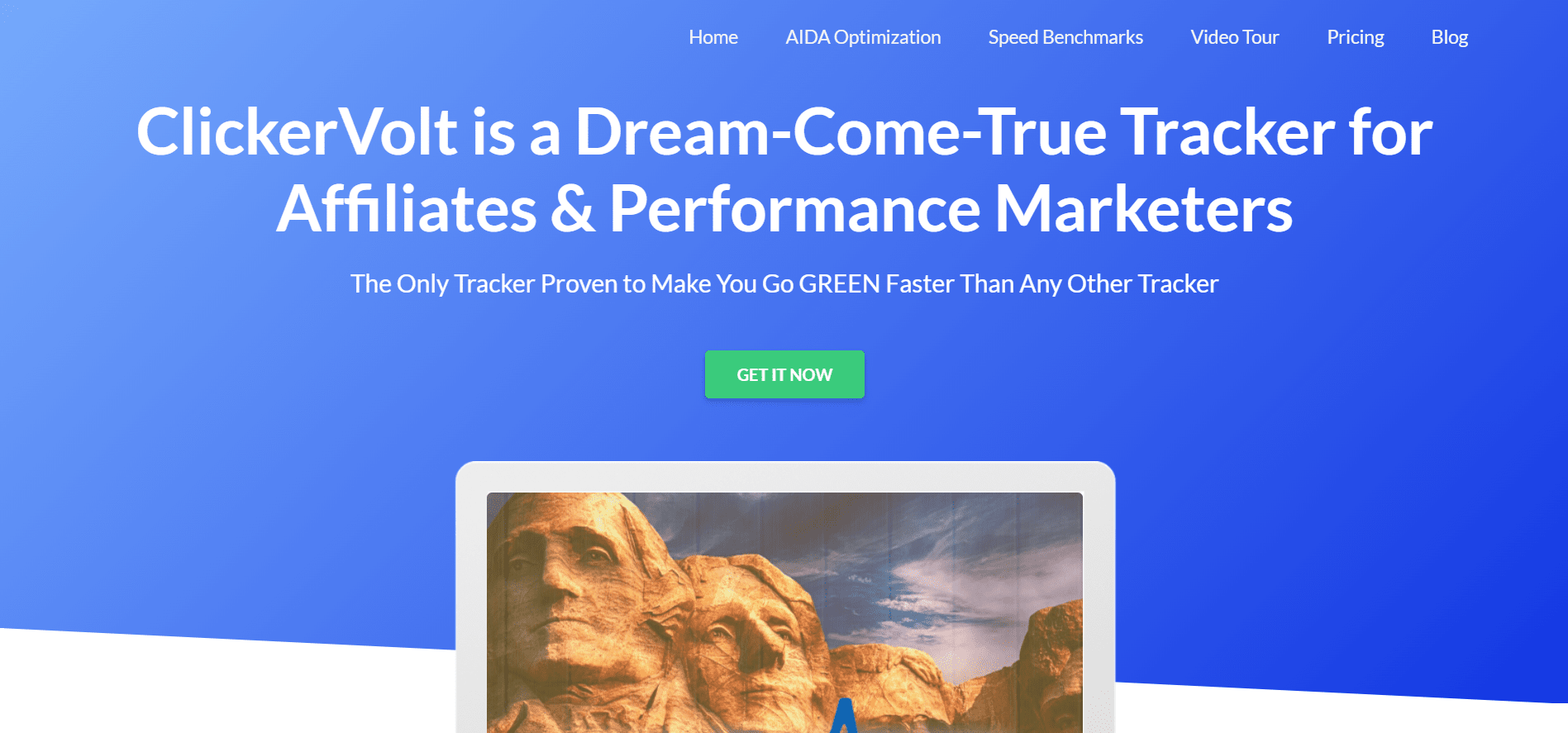
One of the main advantages of ClickerVolt is that it is straightforward to install and set up, even for those with no coding knowledge.
Additionally, the tracker includes several unique features that can benefit corporate advertisers and affiliate marketers.
Pros
- Support has always been top notch
Cons
- Challenging to understand the user-interface
For example, the “Reporting” feature allows you to track your results in real time, and the “Campaign Manager” tool makes it easy to manage and optimize your campaigns.
Overall, ClickerVolt is an excellent choice for an affordable and user-friendly tracker.
Conclusion
As a blogger, you need to know what is happening around you. However, it does not mean you are glued to your screen 24/7. Native Ad Spy Tools will help you get your things done faster. However, you need to decide which option is the right option based on various factors. Some of these factors are:
- Cost of the software
- User-friendliness of the tool
- Features offered by the tool
Frequently Asked Questions
What Is Native Ad Format?
A native ad is an online advertisement matched in form and function to the website or app where it appears. Native ads are designed to blend seamlessly with the surrounding content, making them more difficult for users to ignore than traditional banner ads. By matching the look and feel of the site or app, native ads create a more seamless user experience. As a result, native advertising is more effective than other ad formats in terms of both click-through rates and conversion rates. However, because native ads are more expensive to produce, they are typically only used by more prominent brands with significant advertising budgets.
Are Native Ads Effective?
Native advertising is an online advertising that is becoming increasingly popular with marketers and publishers. Unlike traditional banner ads, native ads are designed to blend in with the content of the website or app where they are displayed. This makes them less intrusive and more effective at capturing users’ attention.
According to a recent study, 53% of web users prefer native ads over banner ads. Native ads are also 18% more likely to lead to purchase intent. These statistics show that native advertising is an effective way to reach and engage consumers. As native advertising becomes more common, marketers need to understand how to create compelling native ads that resonate with their target audience.
Why Native Ads Are Better?
Native advertising has become increasingly popular in recent years, and it’s no surprise why. Native ads blend in with the surrounding content, making them less intrusive and palatable for viewers. Studies have shown that people are more likely to engage with native ads than traditional banner ads, which makes them an extremely effective marketing tool.
There are a few key reasons why native advertising is so successful. First, the format is non-intrusive and doesn’t interrupt the user’s experience. Secondly, native ads are relevant to the audience, increasing the likelihood of being viewed and engaged. And finally, native ads tend to be better designed and more visually appealing than traditional banner ads.
If you’re looking for an effective way to reach your target audience, native advertising is definitely worth considering. With its high engagement rates and low level of intrusion, native advertising is a powerful marketing tool that can produce great results.
